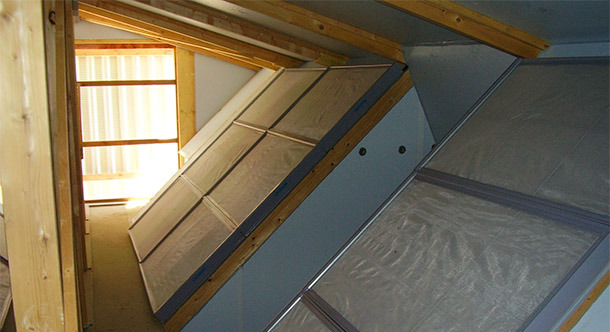Paper
Alonso, C., et al., Epidemiological study of air filtration systems for preventing PRRSV infection in large sow herds. PREVET (2013), http://dx.doi.org/10.1016/j.prevetmed.2013.06.001

Paper summary
What are they studying?
They are quantifying the impact of filtration of incoming air, together with standard biosecurity procedures, on reducing the risk of PRRSV outbreaks in pig dense regions.
How do they study it?
37 sow herds (20 filtered and 17 non-filtered) were compared during 7 years with regard to the incidence of new PRRSV introductions in the herds within a swine dense region of North America.
Phylogenetic analysis of PRRSV ORF5 gene sequences were carried out in all new outbreaks, in order to determine whether the virus was exogenous (introduced) or the same as one found in previous farm isolates.
The influence of sequence difference cut-off values ranging from 2 to 10% on case definition and relative risk were also evaluated.
What are the results?
In non-filtered farms there were 0.5 outbreaks per year, with an increase during the cooler months of the year. Before starting the filtration “treatment” the selected farms had an average of 0.75 outbreaks per year, which is around 50% higher than in control farms. When those farms were filtered the number of outbreaks per year dropped to 0.06–0.22 outbreaks per year.
What conclusions are drawn from this work?
Air filtration reduced the risk of introducing new PRRSV into the sow herds by approximately 80% so, provided biosecurity measures are good, approximately four-fifths of PRRSV outbreaks in swine-dense regions may be attributable to aerosol transmission.

|
PRRS control is difficult, even more so in areas of high pig density. Outbreaks in positive farms caused by introduction of new viruses occur at a high frequency. In our conditions, this frequency is around every 2-3 years (according to some studies) albeit, obviously, with high variability. Airborne transmission, at least in Europe, has never been considered the leading cause of new infections unless the infected farms are located a short distance from infective farms. Some of the articles published in Europe estimate these are less than 2% of the total (Le Potier, et al. 1997). This perception was also common in the United States during the 90s, but it has changed in recent years after airborne transmission was proved a real and, according to this article, frequent (80% of new infections) possibility. It is true that the American virus (type 2) is different from the European strains (type 1) and this, together with the production systems in Midwestern United States —also very different from the European ones, both in farm size and type of holding—, may have an influence on the virus transmission route. Their findings must be considered when contemplating the control of the disease in high-density areas. Reducing the risk of new infection by airborne transmission in our conditions has always been achieved by building farms in remote locations. However, air filtration can be an alternative in certain high density areas. It is true that costs are high, but this type of investment may not be a crazy idea when it comes to protecting farms with high genetic value (others are dependent on) or insemination centres. Having said that, I cannot but take this opportunity to stress what we have already said in previous articles: biosecurity in a holding must consider all potential routes of introduction of new infections. Therefore, air filtration should not replace other containment measures —such as loading bays, fences, visit and materials control, etc.— but be added to them. Furthermore, in high-density areas, PRRS control should include common measures such as communication and follow-up of new outbreaks, equal prophylactic plans with the same runtime, transport cleaning and disinfection programs, etc. |











